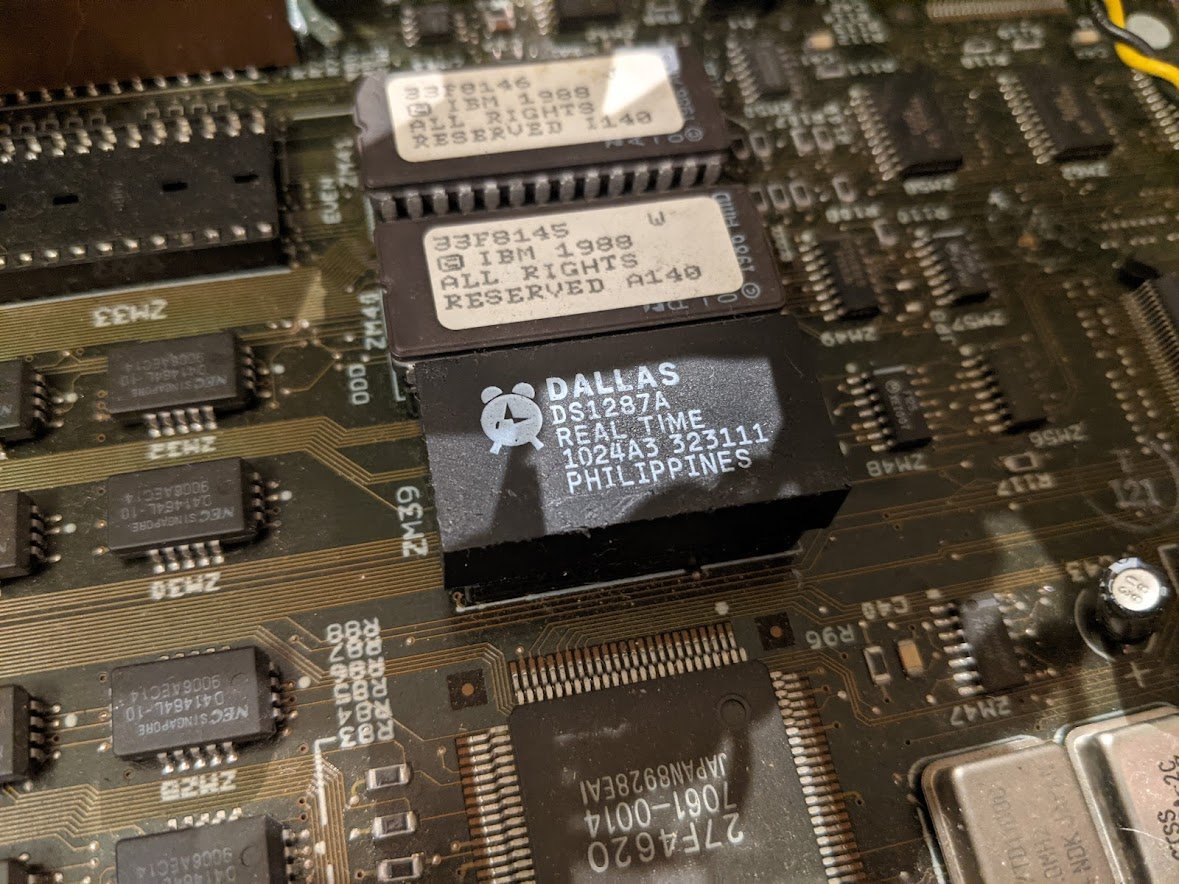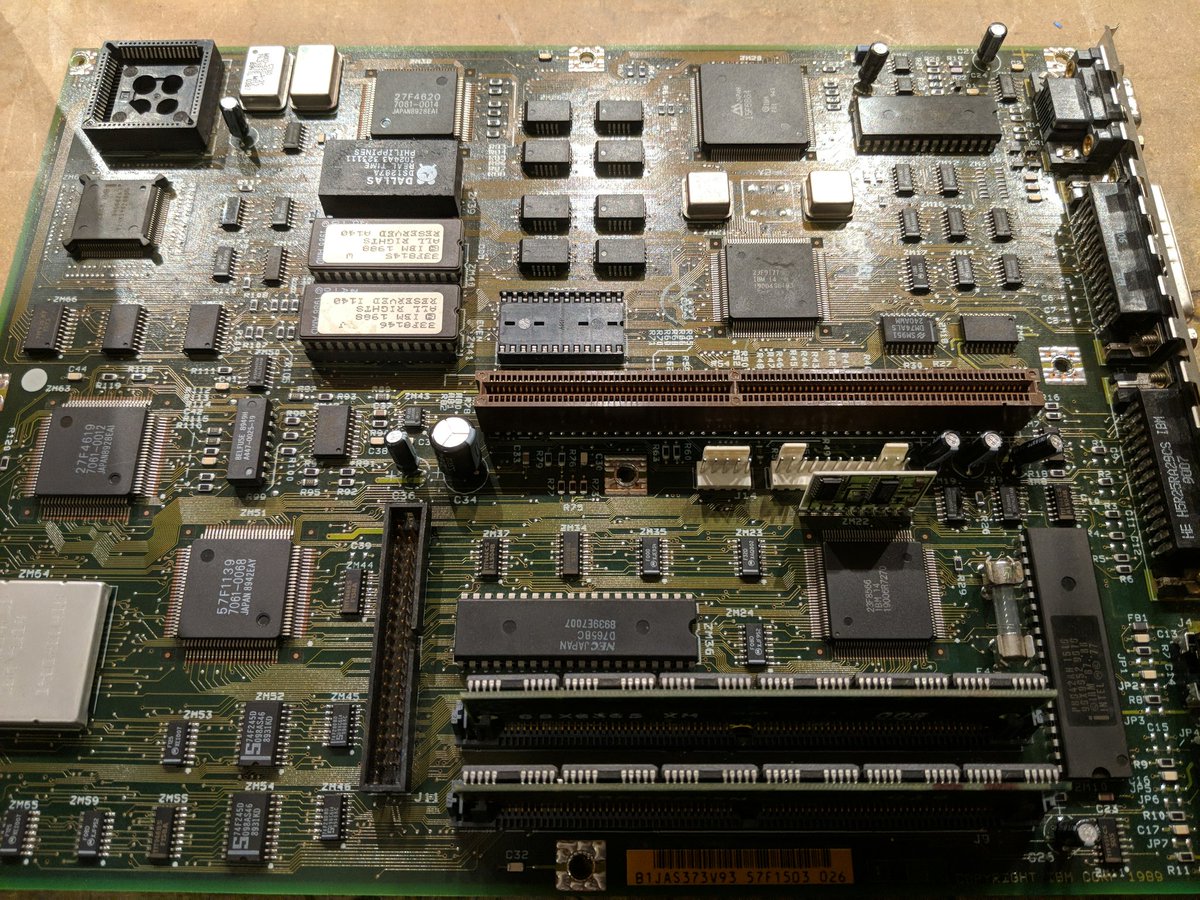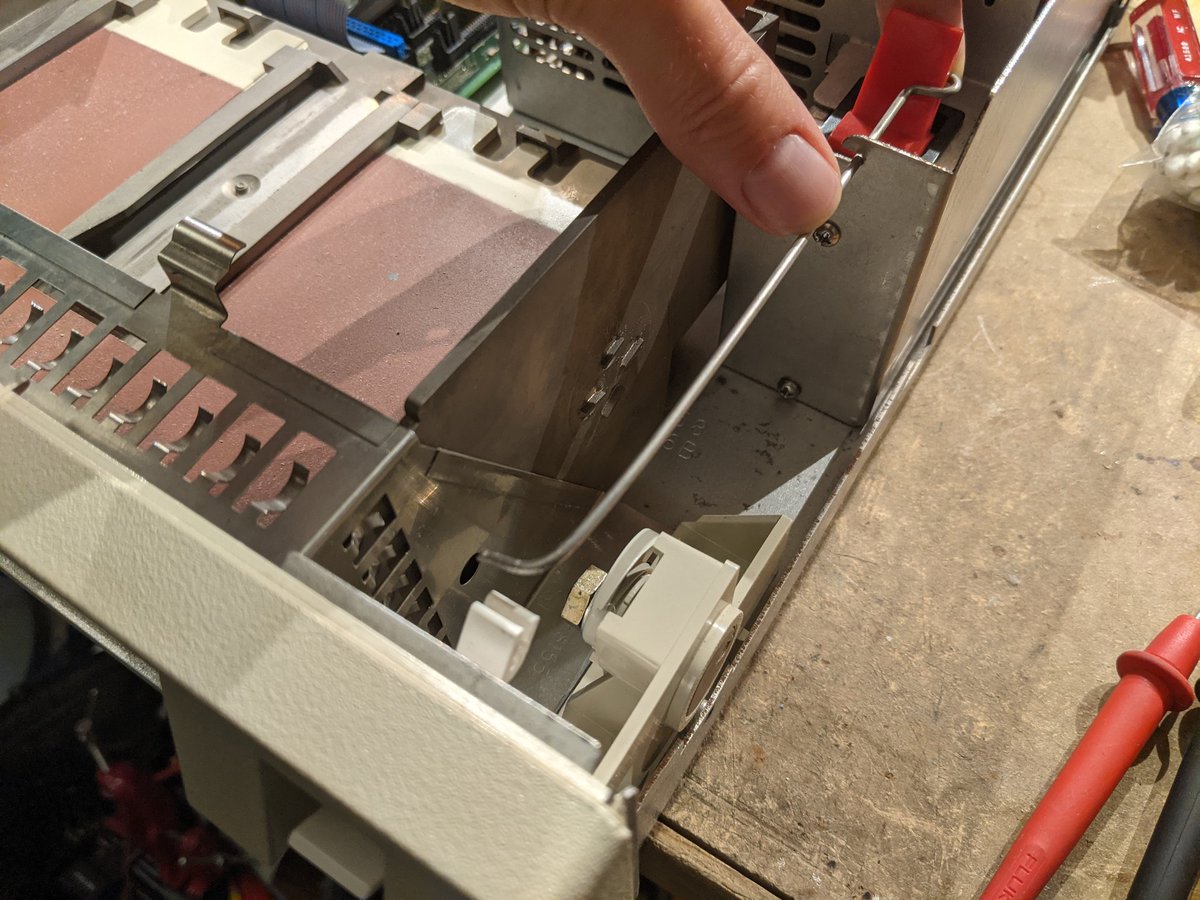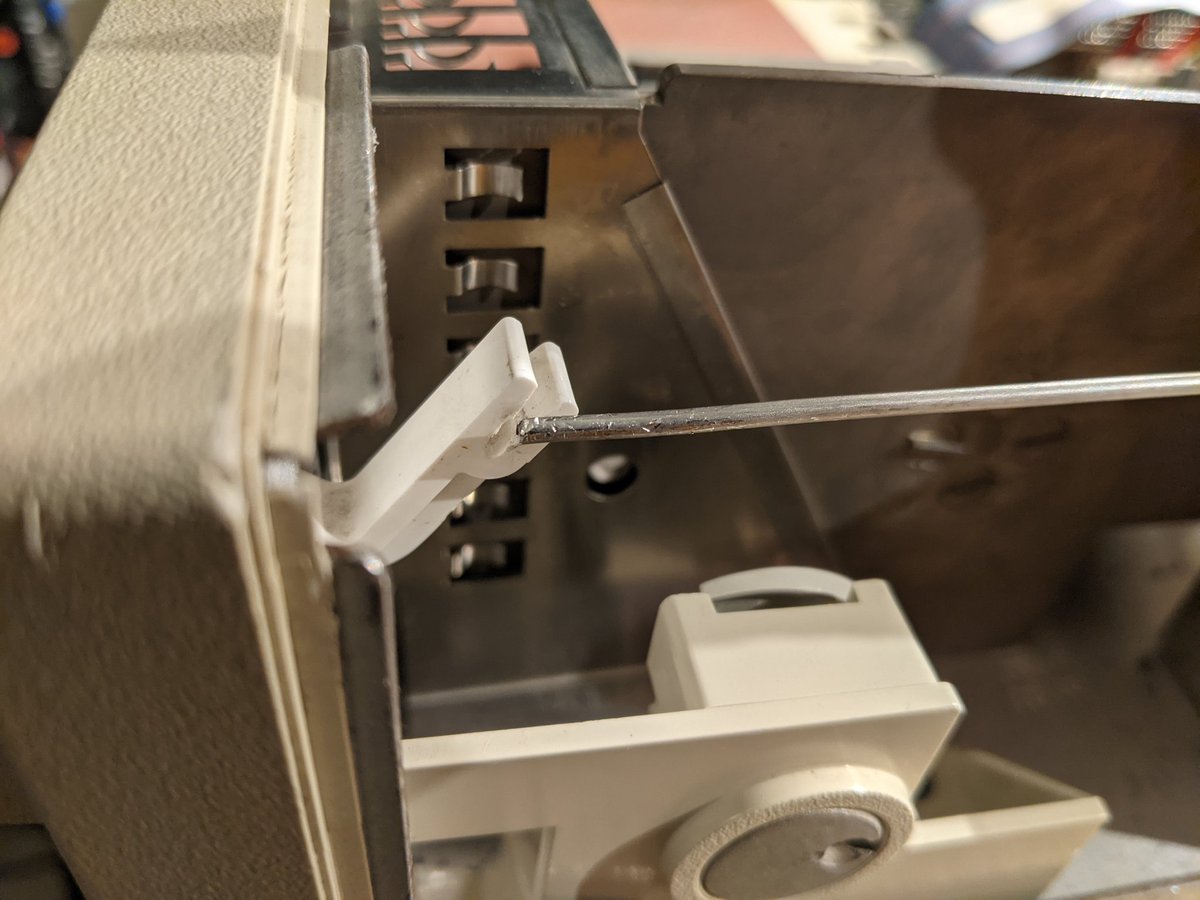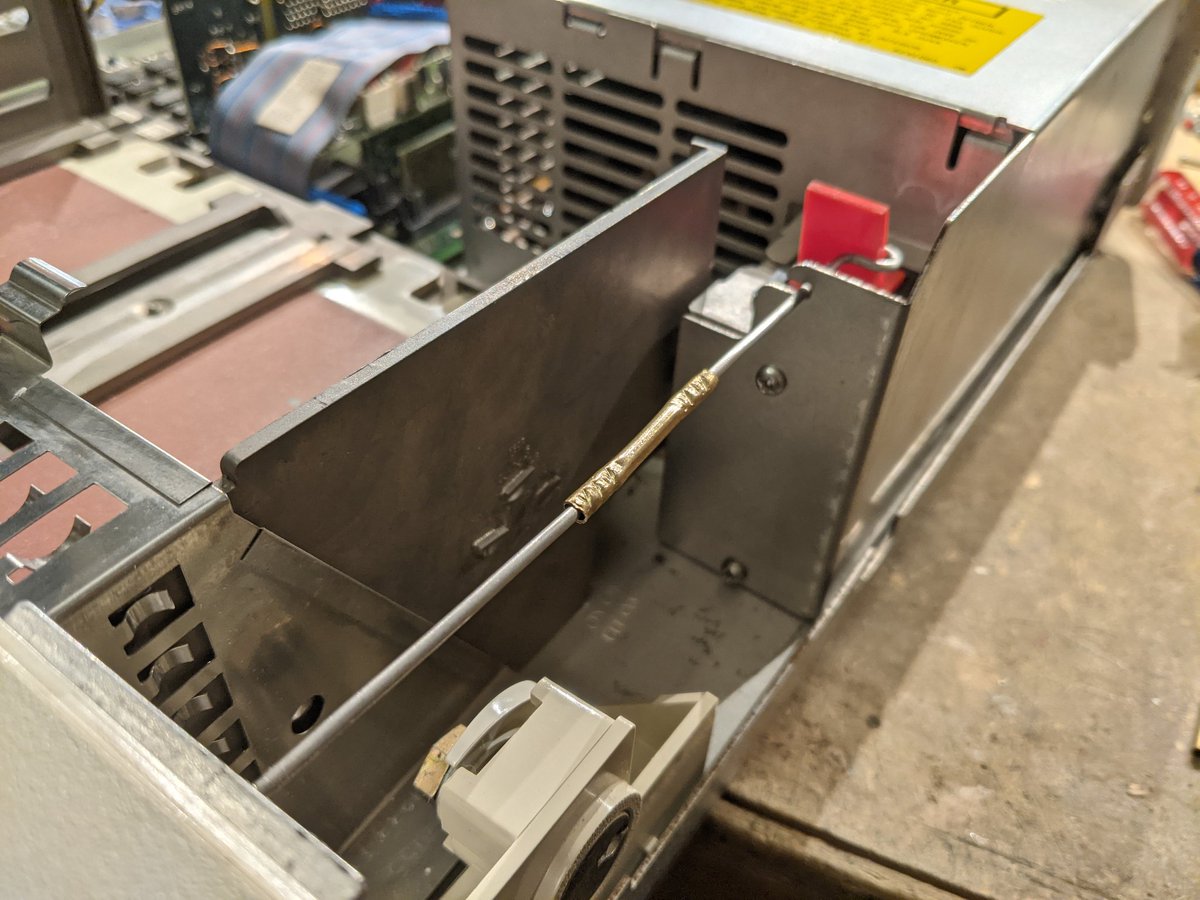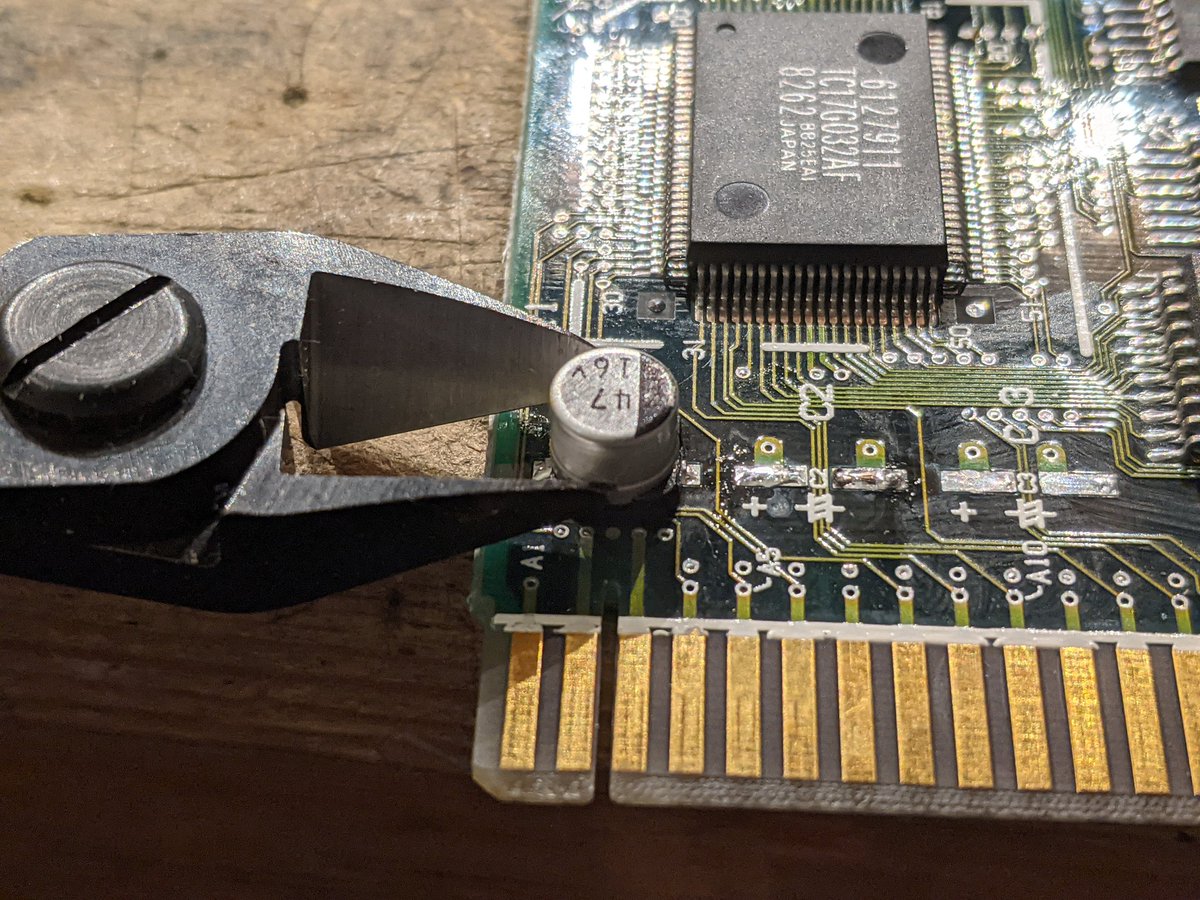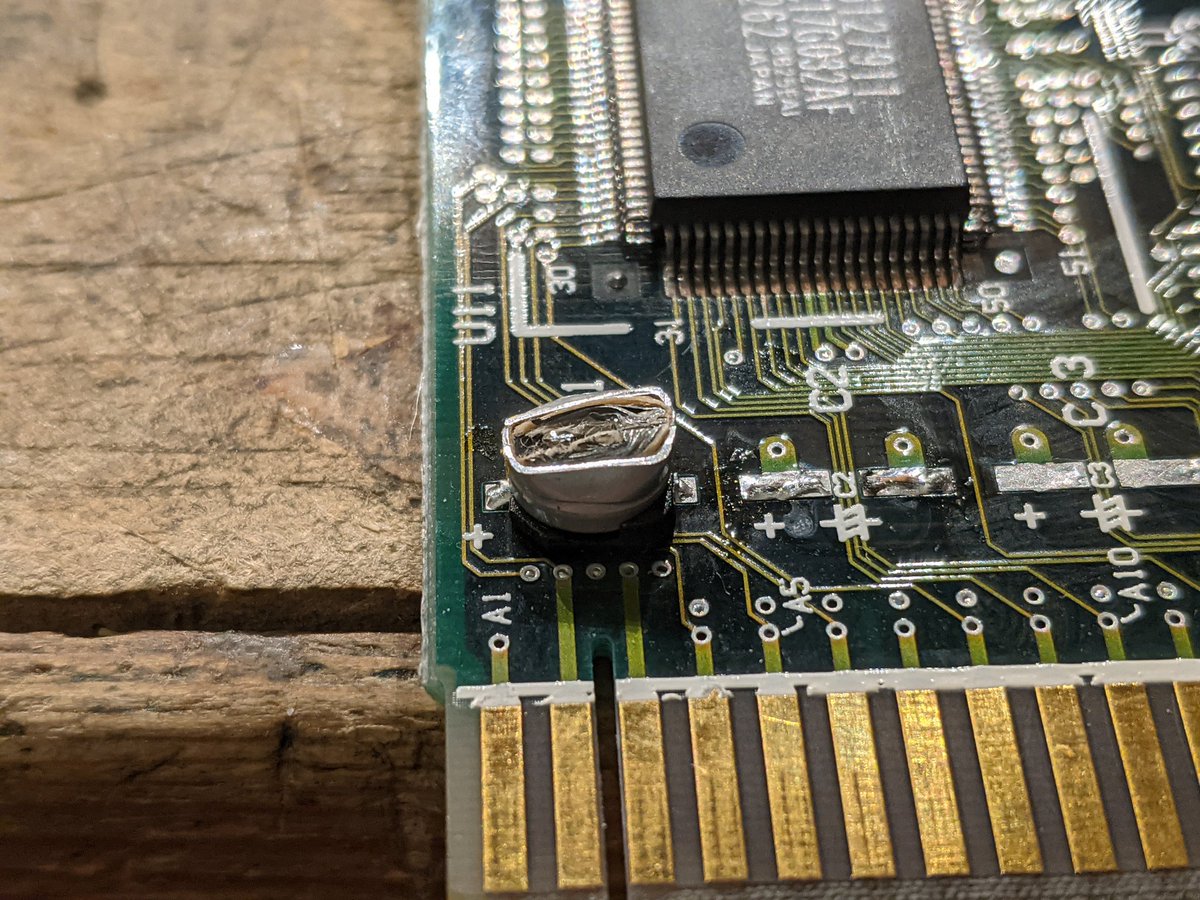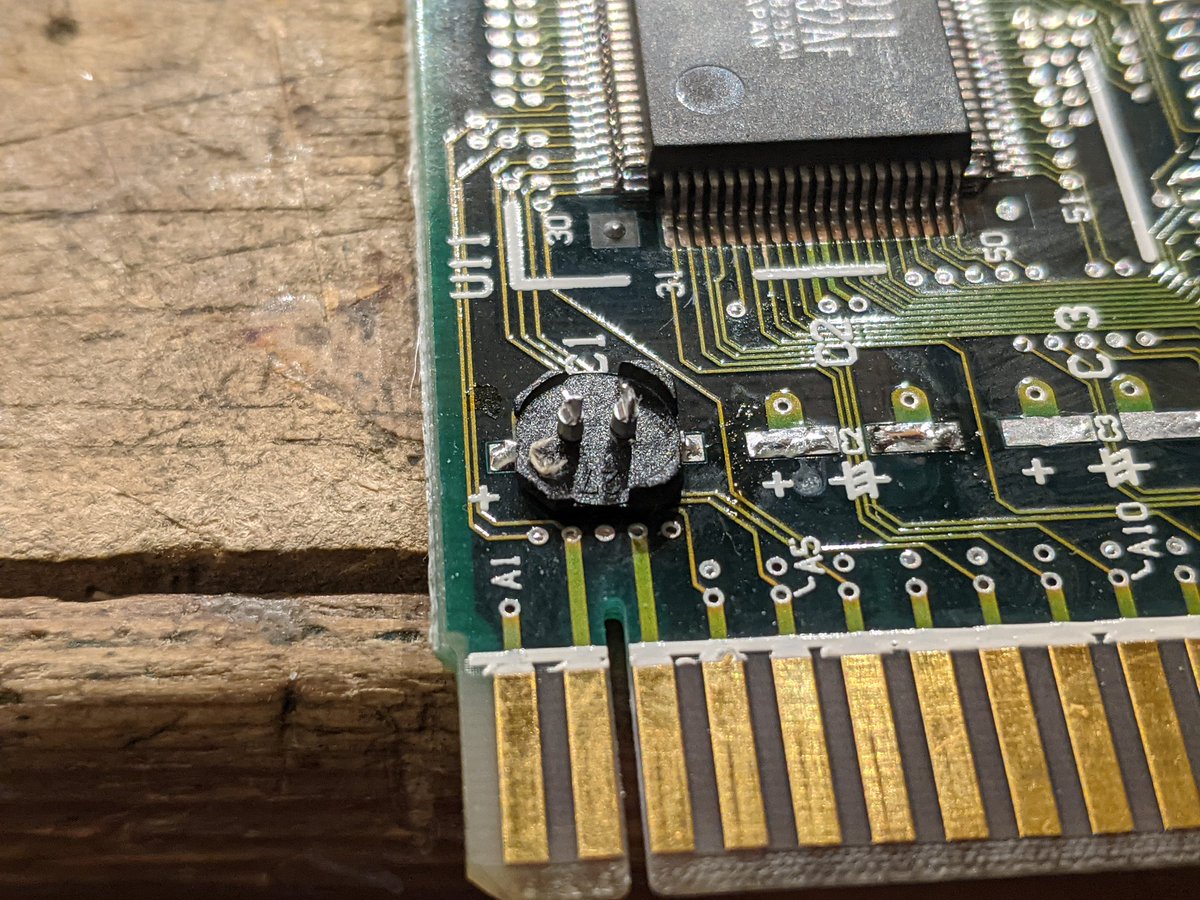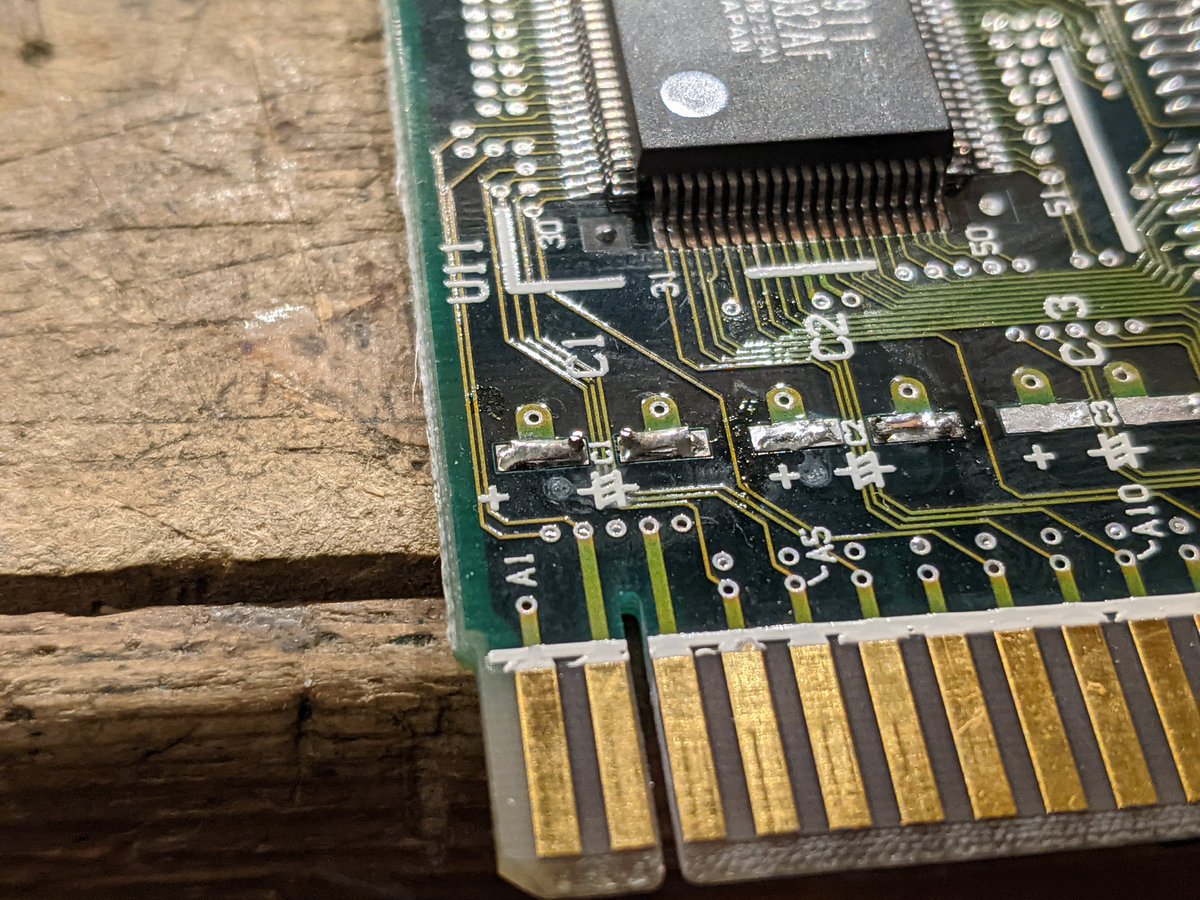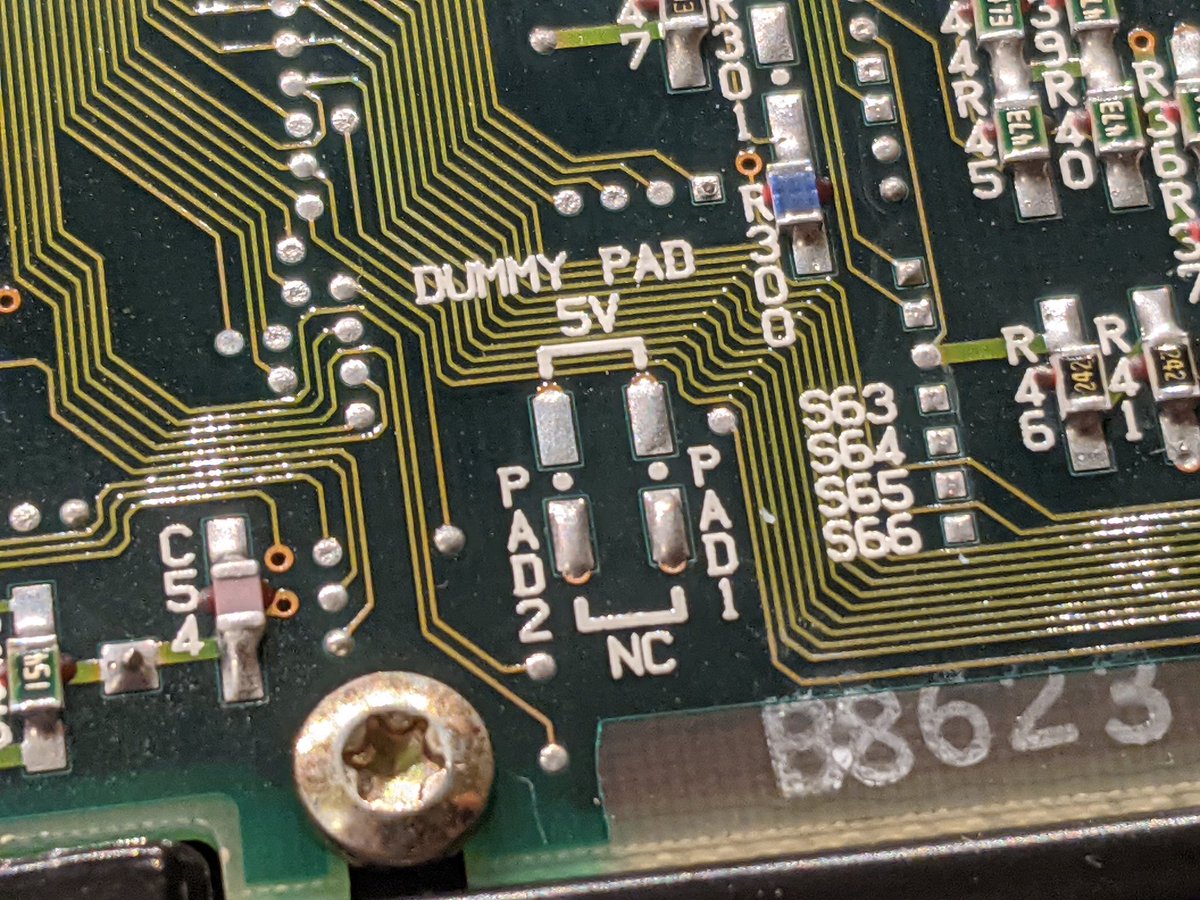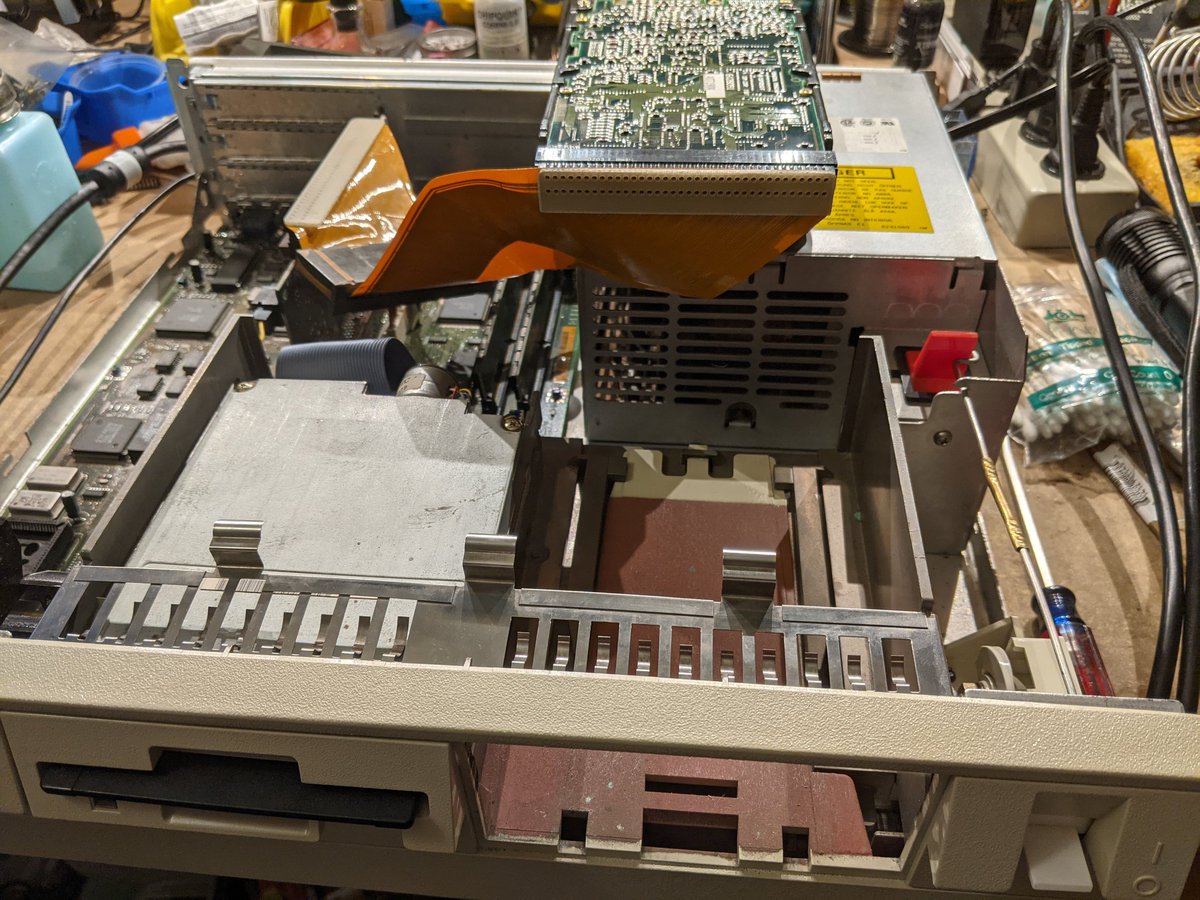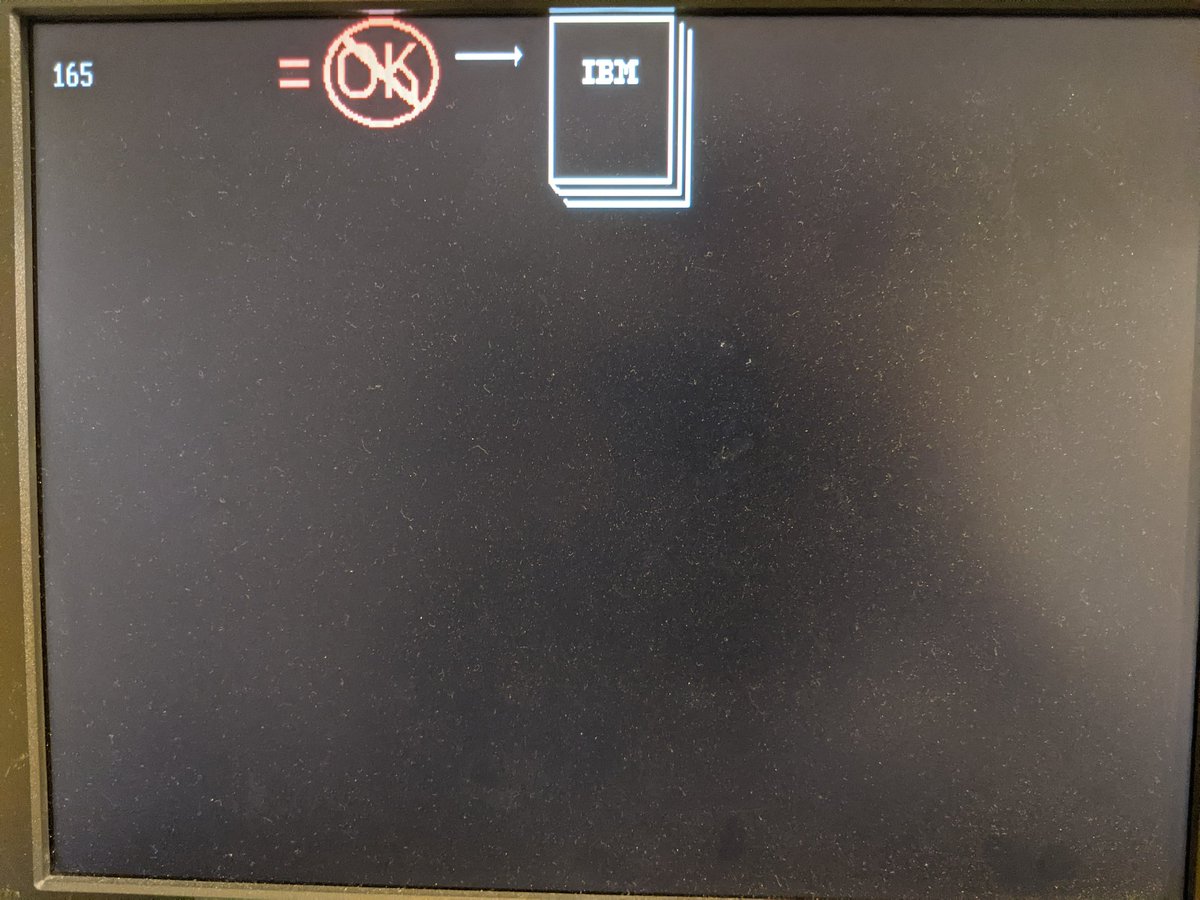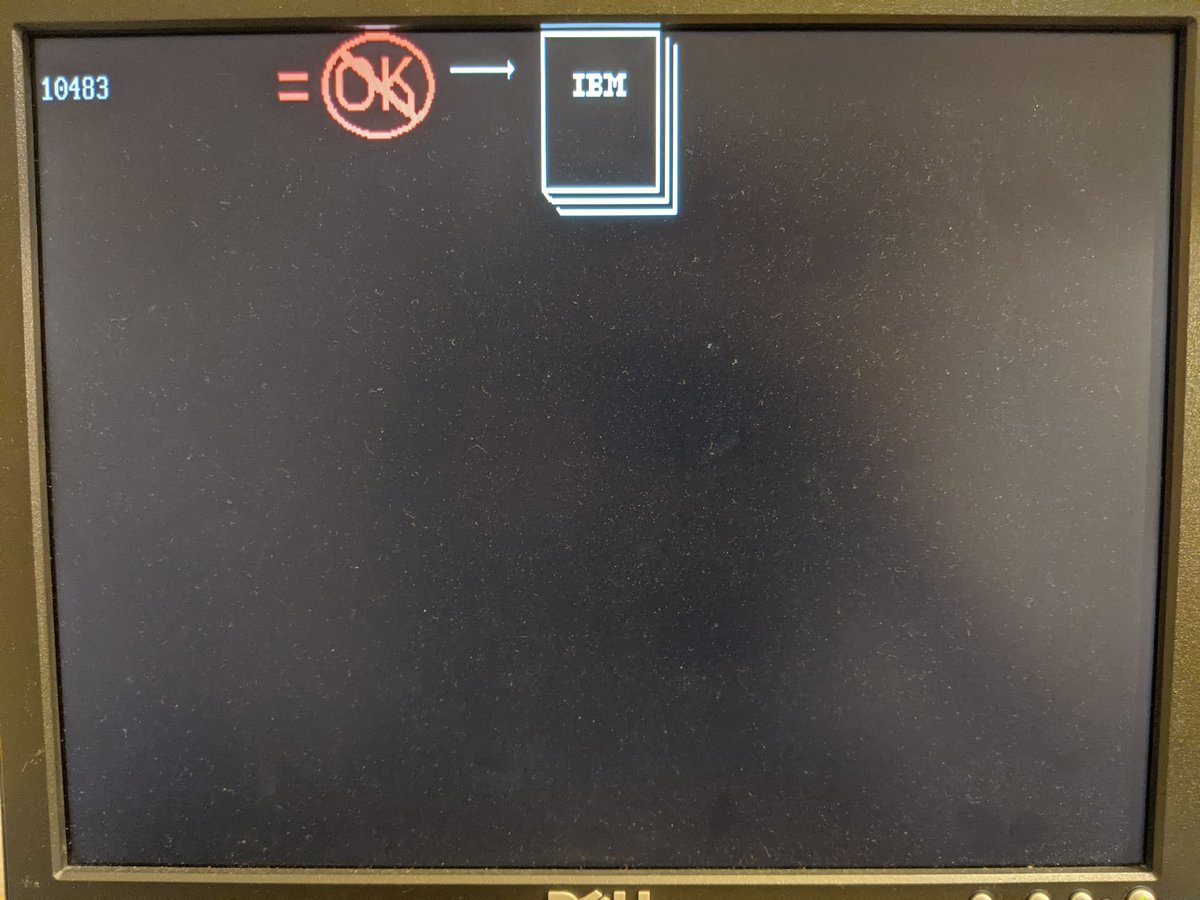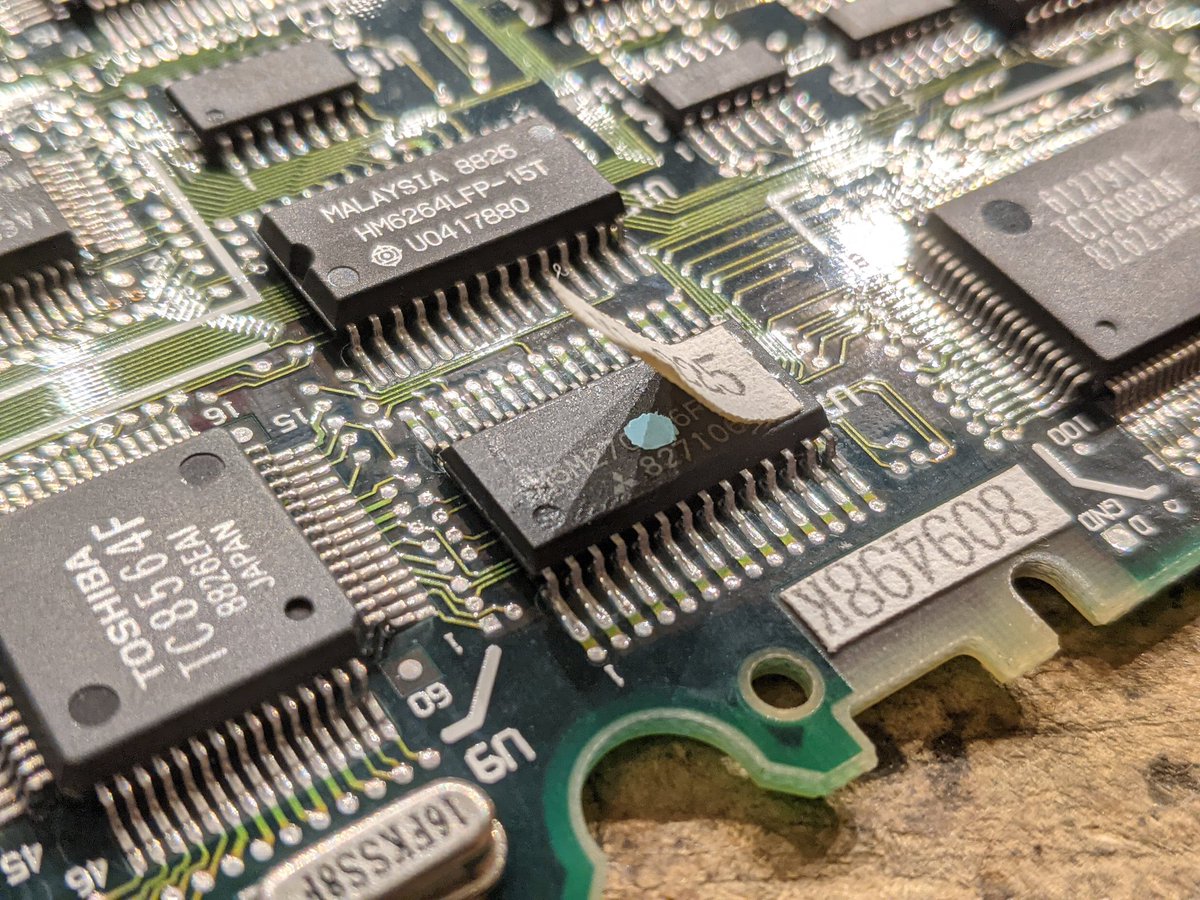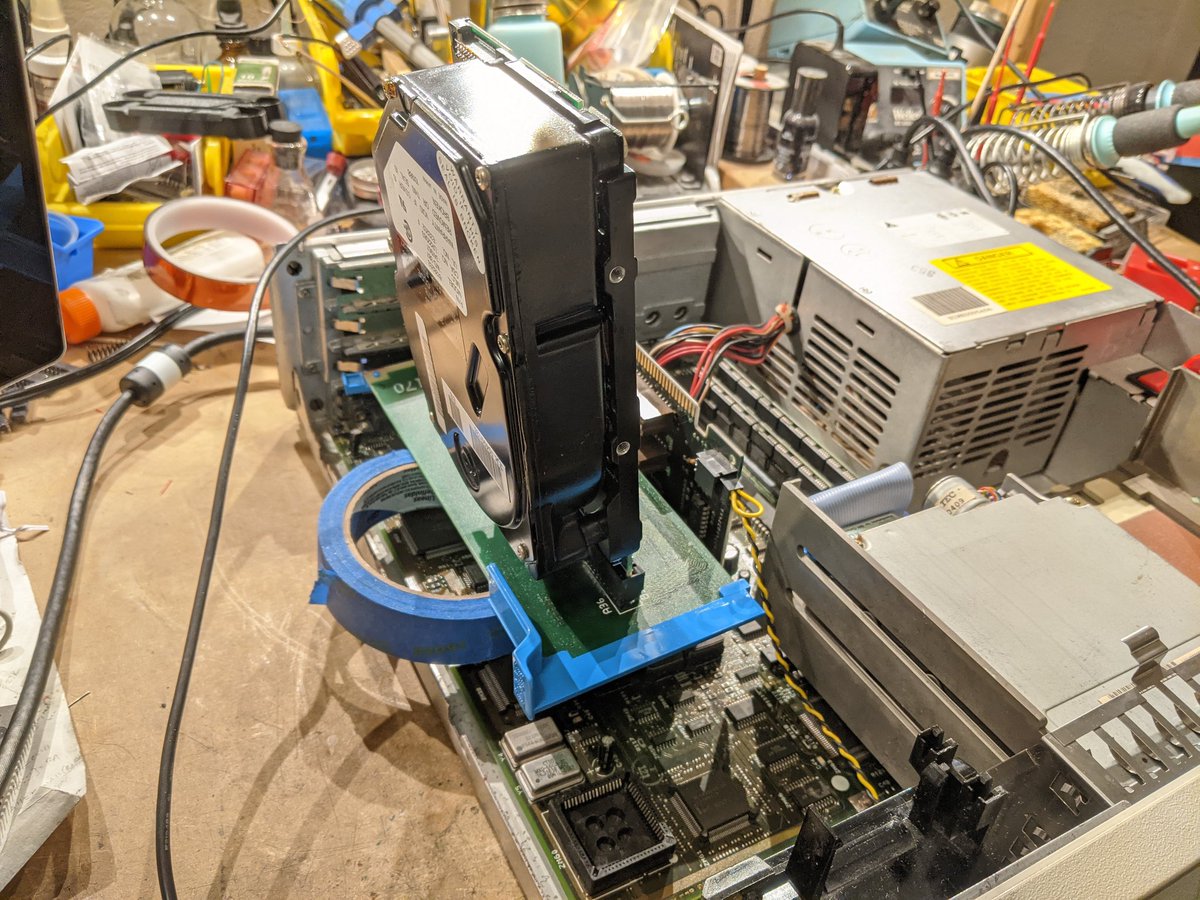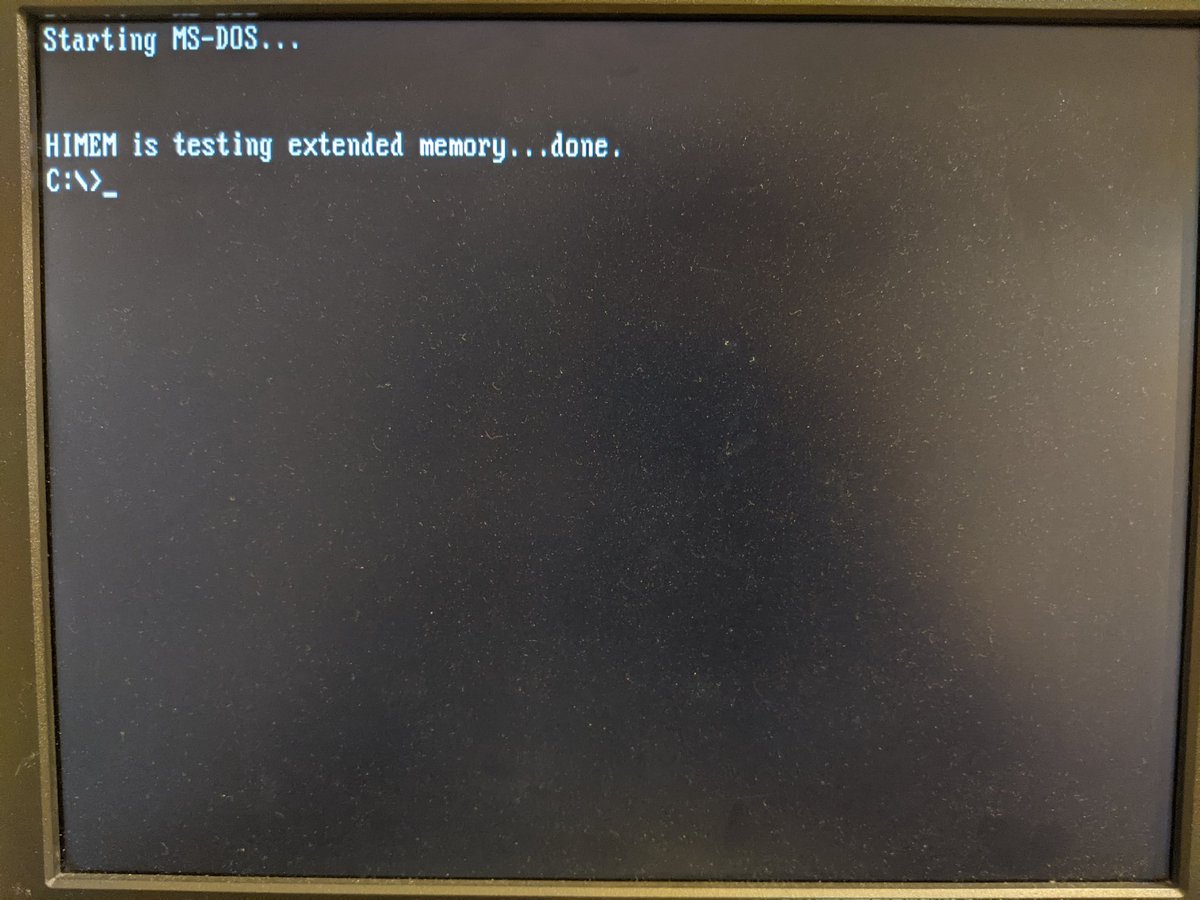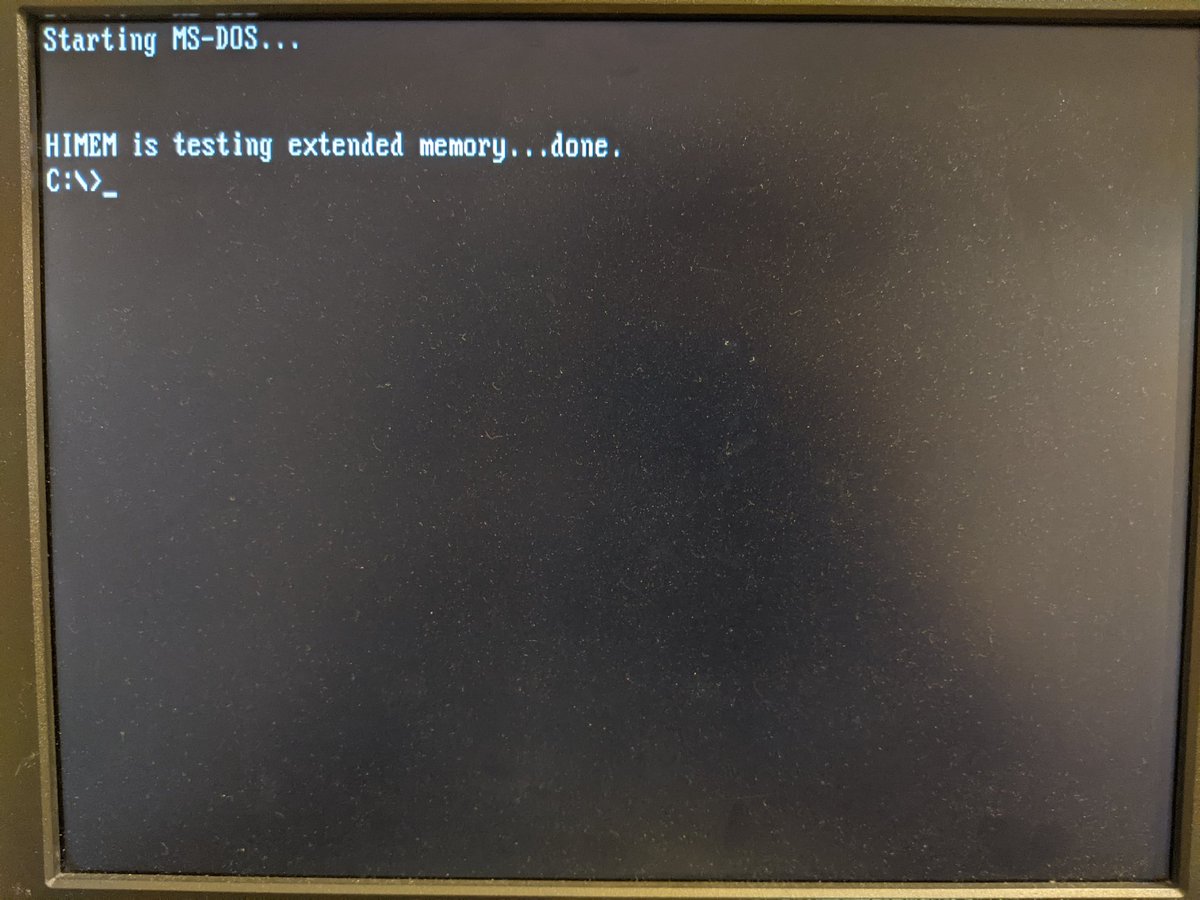
this thing has a very particular smell. it reminds me of the smell of a stash of paperbacks given to me by a neighbor when i was young. i think they had been stored in a damp basement
i've got a very clear memory of being engrossed in "Flowers for Algernon" while simultaneously being grossed out by the moldy smell of the cheap 1970s paperback
it was a great book. it smelled terrible.
this computer has been dropped. i'll need to disassemble the whole thing and bend some stuff back into place. 
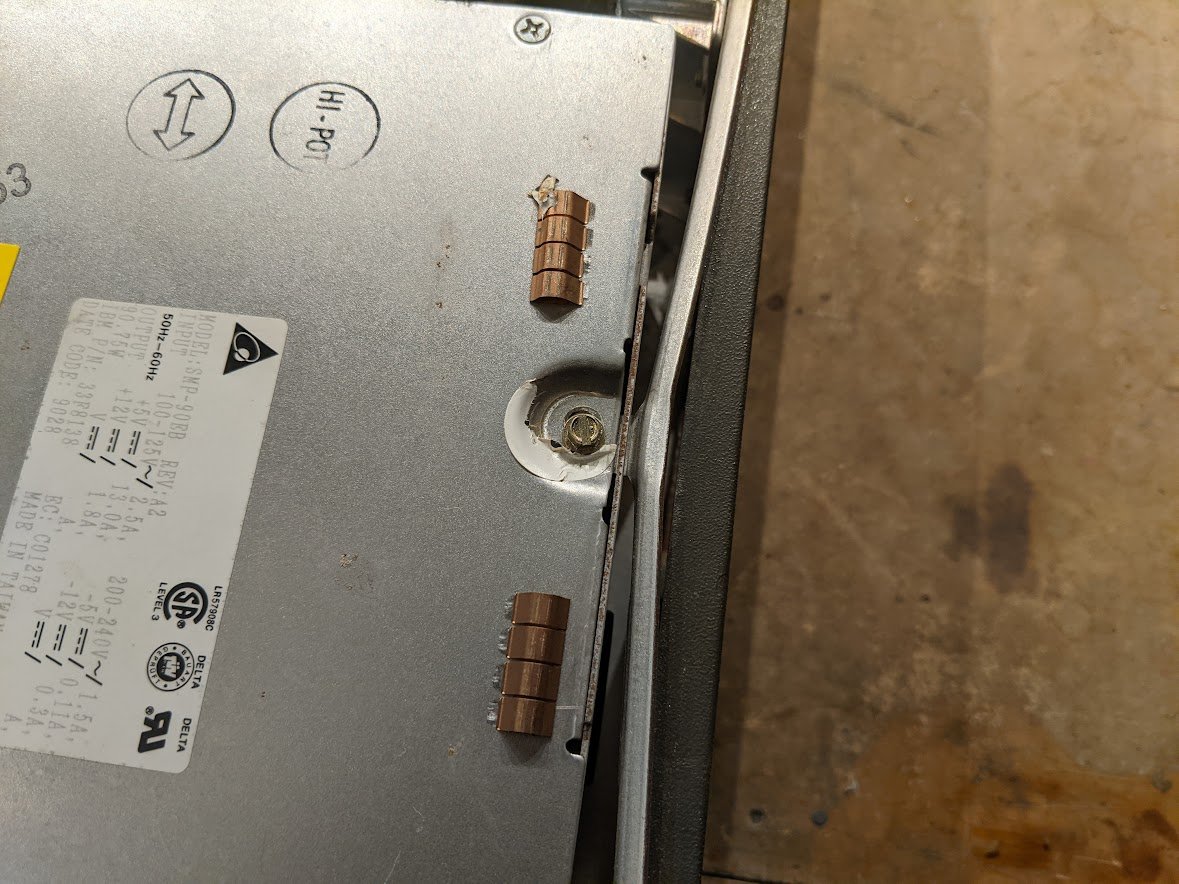
directly to the right of this patch of rust is the CPU, a 386SX-16. this was a low-end machine back in the day. there were 286s that outperformed it. 

fortunately, @systems_glitch offers a solution to that! so if the battery in mine is dead, there is a clean way to fix it. 

underneath all this filth is a Video Graphics Array. the two big chips are semicustom gate array ICs, which is where the name comes from. nowadays we call it VGA. the DIP package on the left is the video DAC, and the eight chips on the right are the video memory. 

on top of the Micro Channel bus riser is this crazy flex cable that goes over to the hard drive bay. these machines use a bizarre Micro Channel variant of IDE. IBM called it "ESDI" to confuse and anger the rest of the industry, who already had an ESDI which was totally different. 

here's Foone being angry about IBM "ESDI"
https://mobile.twitter.com/Foone/status/1369550078826799109
anyway, the power switch is kinda neat because it uses a mechanical linkage (a bell crank) to go from the fake power switch on the front panel to the real switch mounted a few inches away on the power supply itself. 

the bus riser has three Micro Channel slots, the "ESDI" connector on the top, and a bunch of factory bodge wires. 😂 

i pulled out the floppy drive, which apparently works and "has been professionally recapped" except it doesn't really look like it, and also there's a stray solder ball lurking. this is why i tear apart these computers before powering them on. 🤪 

the ColorCoral picks up the dust pretty well. I've already gone over the board with a small paintbrush. 
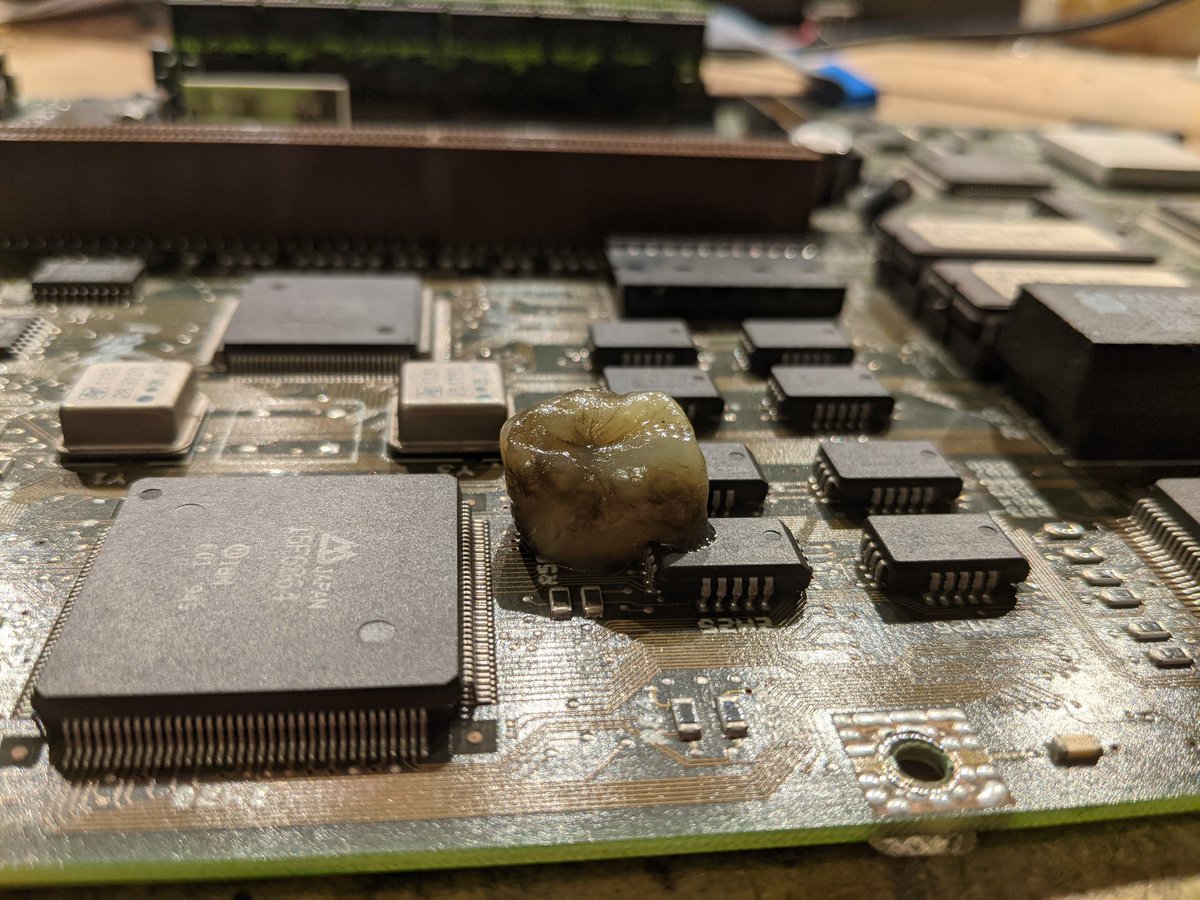
the hard drive flex cable has a small tear. I'm going to stabilize it so it won't tear more and cut traces 

a lot of people recommended that I use a Dremel. seems like that's just the best way to solve this problem. 🤷♂️ 

there we go, let's see if it works.
c'mon, did you really think I'd Dremel into a collectible computer? 😂
c'mon, did you really think I'd Dremel into a collectible computer? 😂

no signs of capacitor leakage, and the ones I could test in circuit seem ok.
looks like someone bent it. probably because the case was so mashed up that the power supply had slid forward and the wire was too long 

couldn't find any electrolytic caps in the right package, so I'm using these fancy SP-caps instead. capacitors have come a long way in 30 years. 

the cable ohms out ok. but some of the contacts look tarnished. a bad cable is a known cause of a 10483 error. 
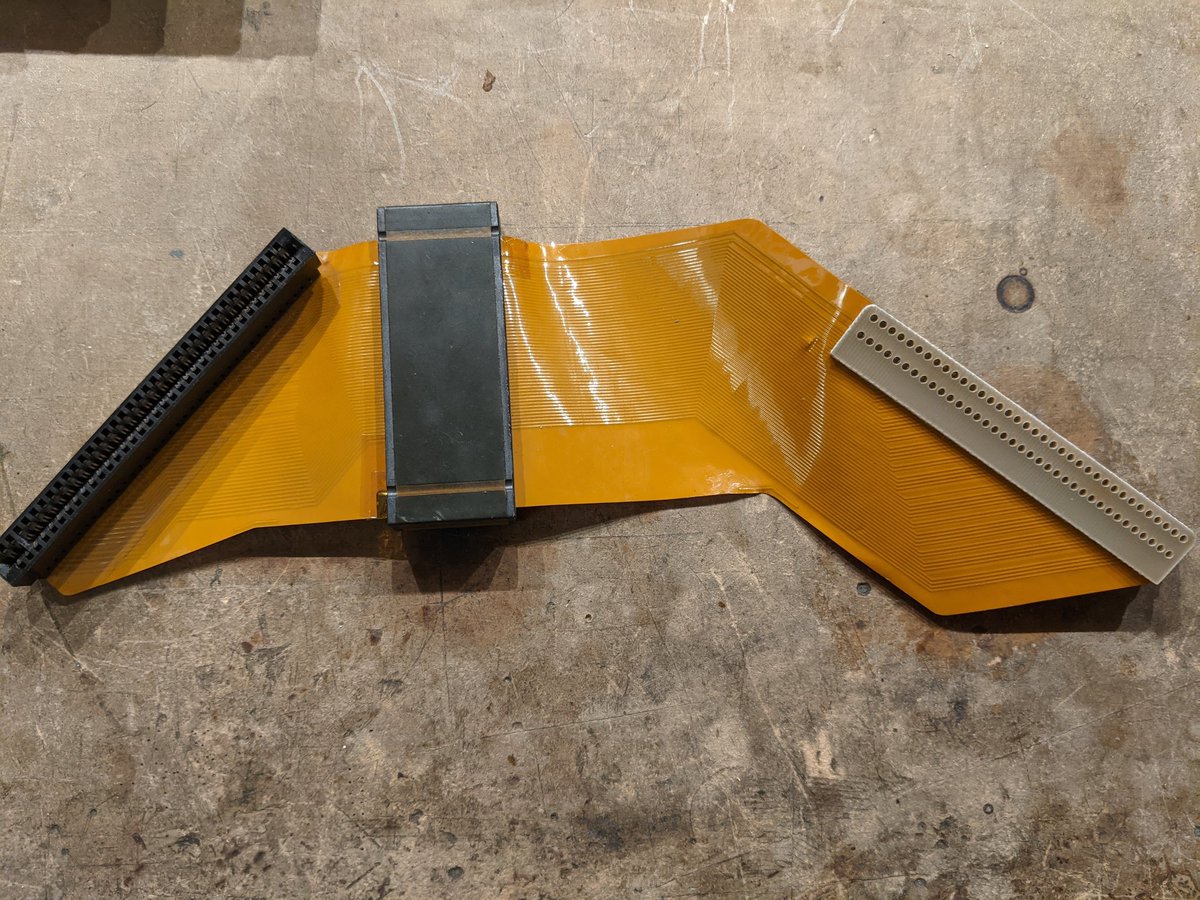
what does this mean? the drive works, the computer works, but the two don't work together. since the cable connections look OK, it could be the edge connector tabs themselves are corroded. or there might be a short in the cable somewhere.
this is the bus riser card from the model 50Z. it takes any micro channel slot and converts it to the ESDI DBA (direct bus attachment) pinout. 



now i need to figure out how to 3d print a replacement drive sled, since this unit didn't come with one. it's not the same height as the floppy drive sled so i can't just copy that one. 🤔
hmm, the 61X8724 looks like the one that i should be using. i could buy the one on ebay or i could just design and print one. 
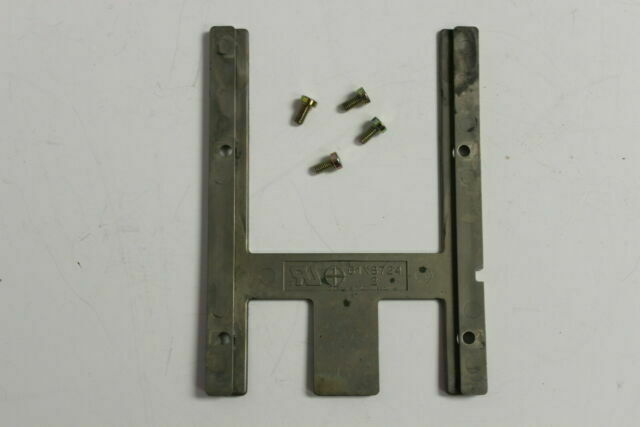
so what software should I install?
• • •
Missing some Tweet in this thread? You can try to
force a refresh



